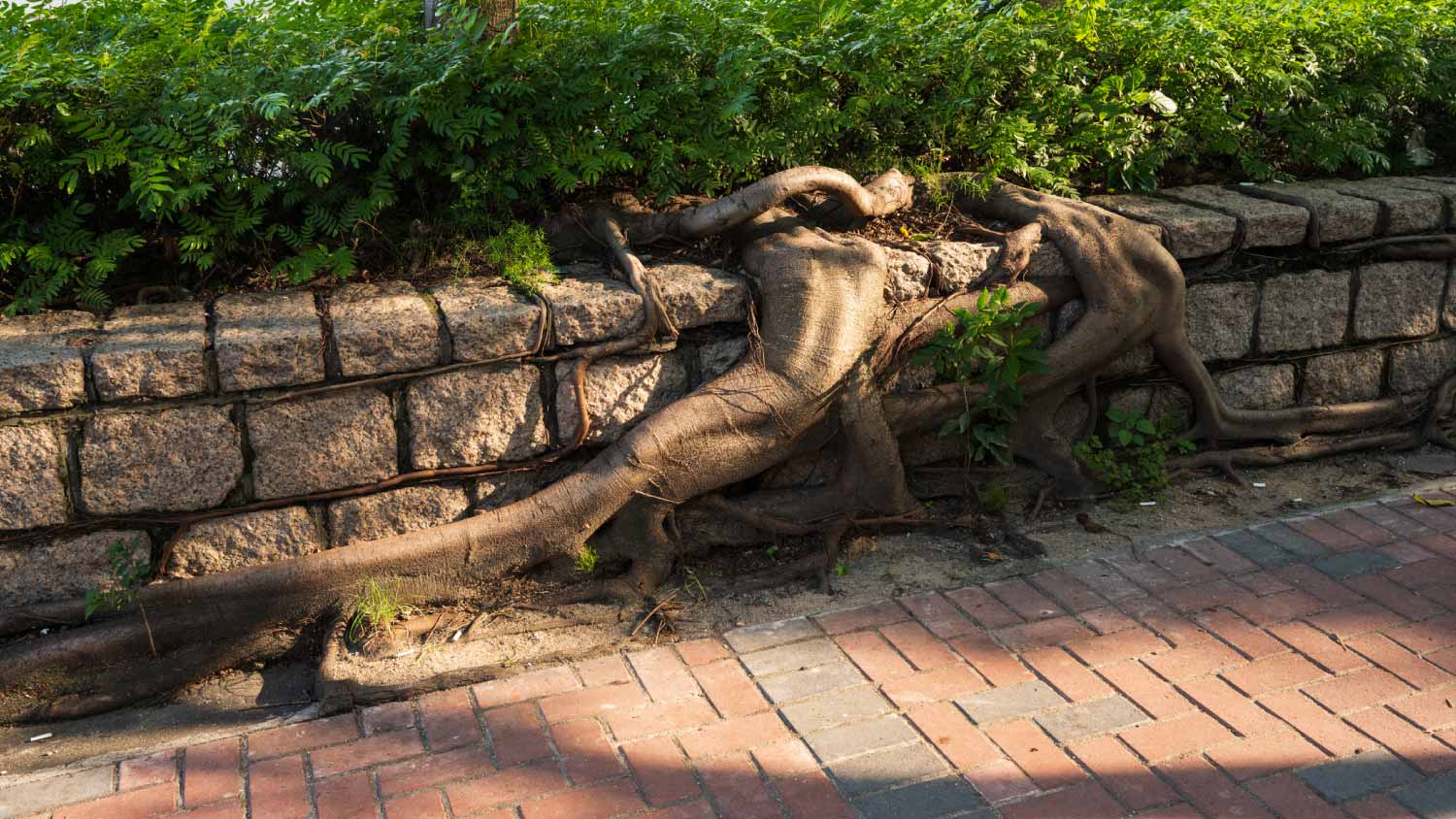7 Ways to Remove a Tree Stump
Don't get stumped by that stump


A tree stump grinding service costs between $175 and $500
Tall stumps are easy to winch out
Grubbing out a tree stump is free but lots of hard work
You should only burn a tree stump if it's safe and legal to do so
Tree stump removal is actually a bigger and more challenging job than felling the tree itself. The tree professional may not have included the tree removal cost, or the previous landowners decided to save money and leave the stump in situ. But, to improve the appearance of your yard, you may want to remove the stump. In which case, you need to know the options, so you can choose the method that's right for your property. If in doubt, call a local tree stump removal specialist and get expert advice.
Grinding a Tree Stump
Grinding a tree stump costs around $320 and is a cost-effective stump removal solution. To save money, if you have the skills and can use one safely, you can hire a stump grinder by the day to tackle the issue yourself. Just remember, these are large, powerful machines, so the risk of injuring yourself is high. Therefore, at the very least, you need to know how to safely use one, and you must wear suitable protective gear.
Stump grinding consists of grinding away the stump to just below ground level with a large grinding blade. This process eventually causes the roots to die because there are no terrestrial parts left to produce new foliage, so the tree cannot photosynthesize.
Because grinding isn't a full removal, it's important to note that you cannot build over the area, even with a patio or deck because there's organic matter left in the ground. Over time, the wood and roots decay and break down, so the soil will shift to fill the gaps, and any structure you build on top will also shift and will be costly or even impossible to repair.
Winching or Pulling a Stump Out
For smaller tree stumps, winching or pulling them out is an option. Not with your truck. Never be tempted to try and pull out a tree stump with your truck and a chain. Even small tree stumps can easily exceed the load capacity of your pickup, and you risk causing significant damage.
Instead, hire a pro or use a winch designed for tree stump removal. Also note that for this work, you'll need to have a fairly tall tree stump, ideally around 4 feet tall, for winching to work. This height allows for plenty of leverage, which is the key to making winching out a tree stump.
Winching is a simple and effective method of tree stump removal and, if you want to DIY the process, you can hire a winch by the day.
Chainsaw Stump Removal

If you have a chainsaw, you can use it to kill off a tree stump. It's a little bit like grinding away a tree stump and, just like grinding, it won't get rid of the root system or the portion of the stump that's well below ground level. But it's an affordable solution, although it does require a fair amount of manual labor.
First, you'll need to dig away as much of the earth around the tree stump as possible so that you can get your chainsaw low down with less risk to the chain and blade. If you can expose the main roots, you can cut those with your chainsaw and potentially pry up the stump.
However, this isn't always possible. So, instead, you clear away as much dirt as possible, then slice into the tree stump, making criss-cross cuts about 6 inches deep all over the surface. This should effectively kill the tree stump, and it'll eventually rot away.
Grubbing Out a Tree Stump
Grubbing out a tree stump is essentially digging it out by hand. It's free, as long as you've got a couple of basic tools, but it's time and labor-intensive and requires a high degree of physical fitness.
To remove a tree stump manually, you need to dig out the soil away from the stump to expose the roots. While cutting any roots is good and will weaken the stump's hold, ideally, you need to go after as many of the big anchor roots as you can find.
Clear away the dirt then use loppers or a saw to cut through the exposed roots. Once you've severed enough roots, you'll be able to lever out the stump. Use a digging bar or a pry bar to work your way under the stump and lever it up and out using a wiggly motion.
Burning a Stump
Burning a stump is only an option in certain situations because fire carries significant risk. If there's no risk of wildfires in your area, the trees tump is not close to the property, utility lines, or flammable items, and you can erect a fire ring for safety around the stump to limit the risk of spread, then you can potentially burn away the top of the stump by building a bonfire.
A tree stump that's in-situ will take a long time to burn unless it's already been dead a few years and has dried out, because green wood has a high moisture content. So you won't get rid of a fresh stump with a single fire, even a fairly big bonfire. One option is to make that spot a place where you burn scrap wood and yard waste regularly, as this will burn down the stump a little at a time with every fire.
However, there are obvious risks involved and you'll need to check with your municipality to see if stump burning is allowed in your area.
Rotting a Stump Away Naturally
Rotting a stump naturally takes a few years and involves cutting the stump as low to the ground as possible, then drilling holes deep into the surface. Then, bury the remainder of the stump in compost, leaf mulch, and other organic matter, and leave it to break down. Eventually, it'll break down enough that you can hack it out with an ax or spade.
Rotting a Stump Away Chemically
Rotting a stump away with the help of chemicals makes the process much faster. However, be sure to use chemicals responsibly and keep children and pets away from the area, as the chemicals are potentially harmful on contact or if ingested. Also note that you should only use this method if the stump you're removing isn't near any other trees or plants you want to keep.
To chemically remove a tree stump, drill holes 8 to 12 inches deep spaced 1 inch apart in rings spaced 3 inches apart. Then fill these holes with the stump removing chemicals of your choice. The most common is potassium nitrate. Once the chemical solution fills the holes, cover the stump with a tarp. Leave the stump for around 6 to 8 weeks, or until it becomes spongy or crumbly. You can then remove it with an ax or a spade.





- Is Stump Grinding Necessary? Pros and Cons of Stump Grinding
- What Is Stump Grinding? Here’s Everything You Need to Know
- Stump Grinding vs. Removal: Which Is Better?
- How to Burn a Stump: 8 Steps for DIY Stump Removal
- How to Rot a Tree Stump Fast
- How to Kill a Tree Stump: 7 Effective Methods to Try
- How to Remove a Palm Tree Stump: A DIY Guide
- How to Stop a Tree Stump From Growing: 4 Different Methods
- How to Kill Tree Roots: 6 Ways to Remove Roots Safely
- How to Stop Tree Roots From Lifting Pavers: 10 Tips










